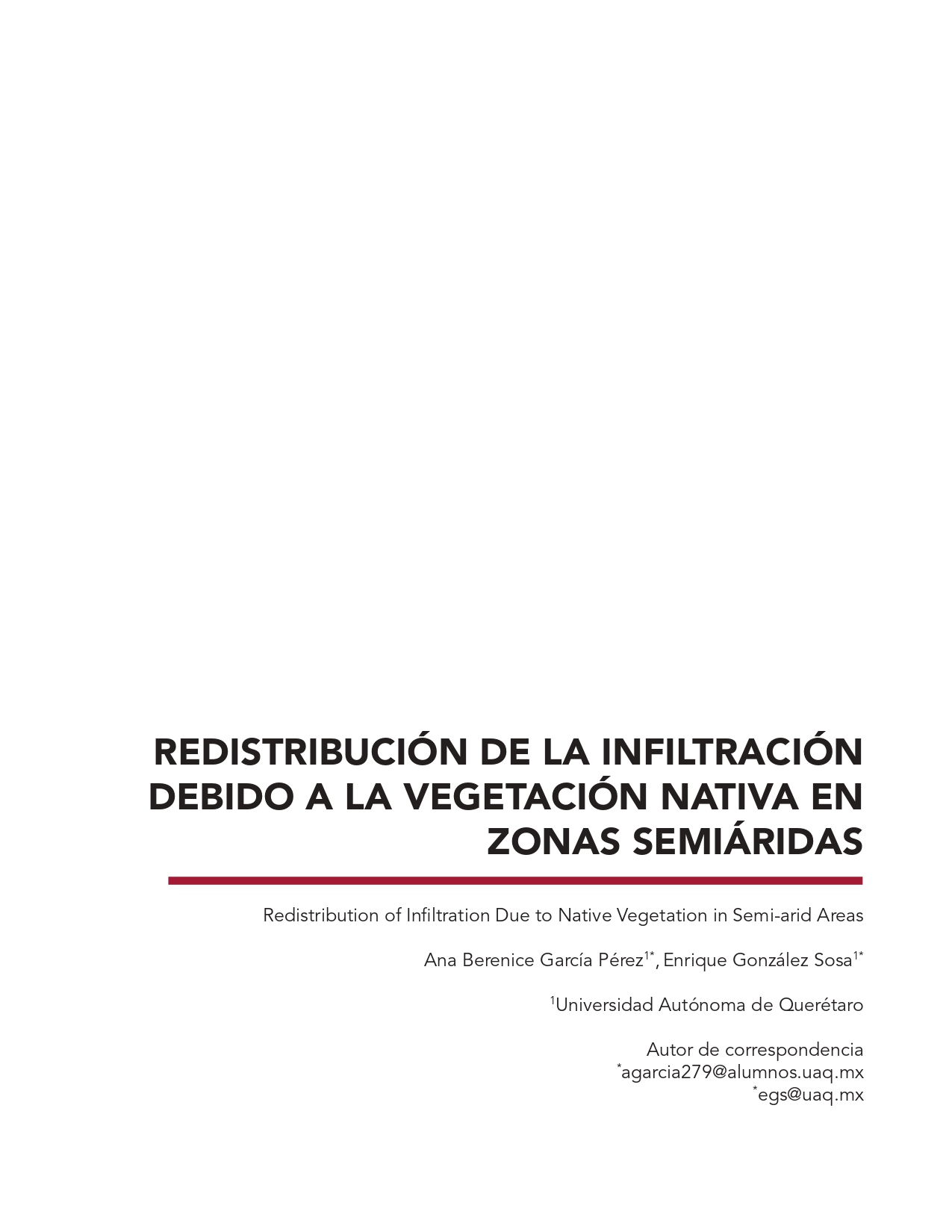Abstract
The State of Queretaro, in Mexico, presents an arid and semi-arid climate, little vegetation and has experienced important changes in recent years in land uses, which cause a redistribution of infiltration. Since the vegetation cover is lower in the arid and semi-arid areas than in other climates, the importance of huizache (Acacia farnesiana) —the main species in the location— in the redistribution of infiltration is analyzed in this study. The characteristics of the soil were determined and single ring infiltration tests were carried out at different distances and directions from the trunk of a huizache individual. Two different types of soil were obtained: loam and clay loam. In addition, it was found that the huizaches have an influence on the volumes and rates of infiltration in the soil, which decreases more slowly the further away from the trunk. In addition to this, they generate an area of influence outside their radial zone in which the infiltration is more accelerated than at any other point in the area under their crown, a phenomenon that is initially attributed to the shadow effect present in the vegetation. The present study shows the close relationship between the native vegetation of an arid zone and the infiltration volumes present in the soils.
This work is licensed under a Creative Commons Attribution-NonCommercial 4.0 International License.

